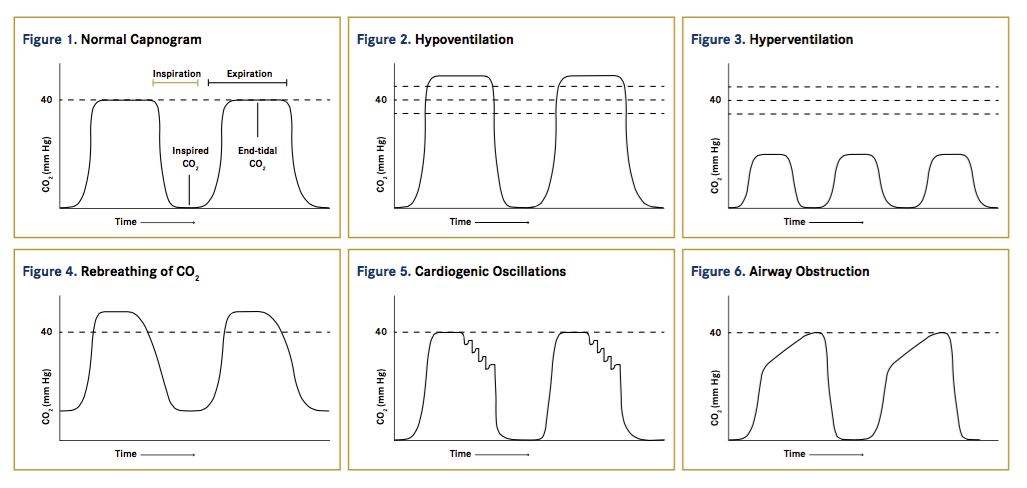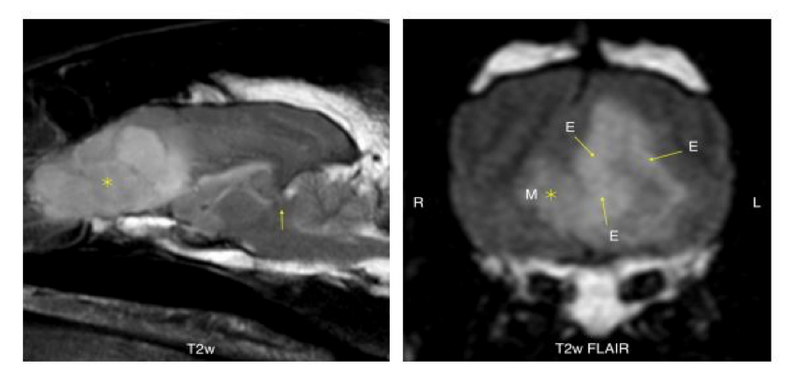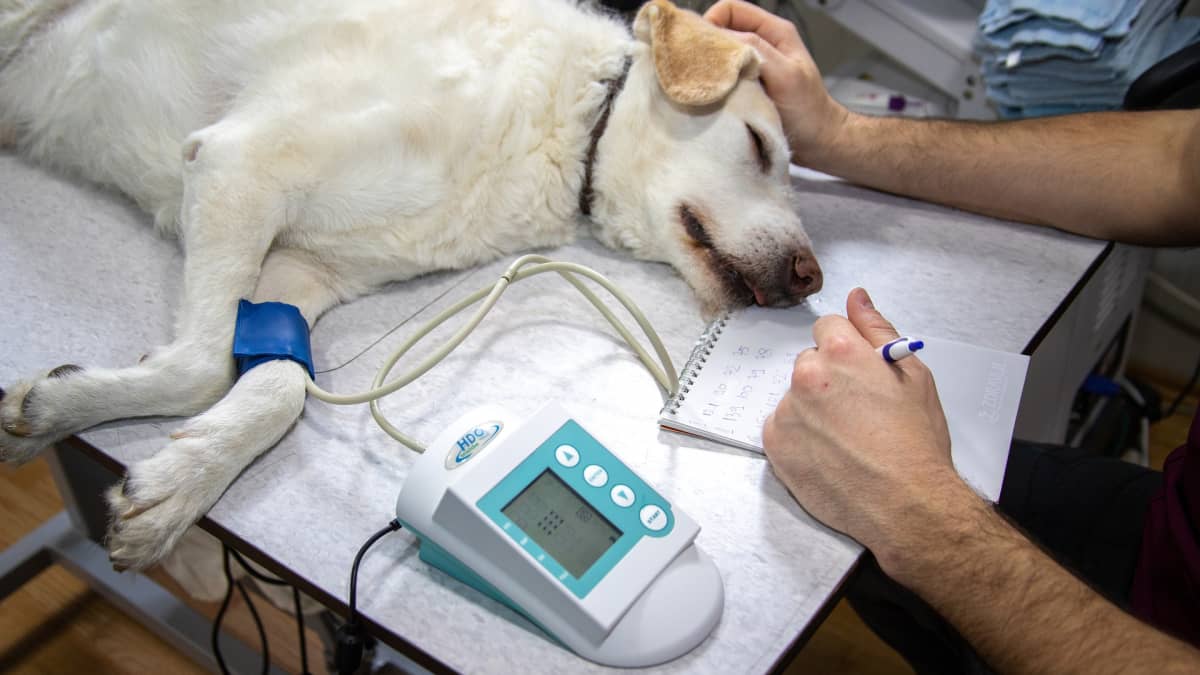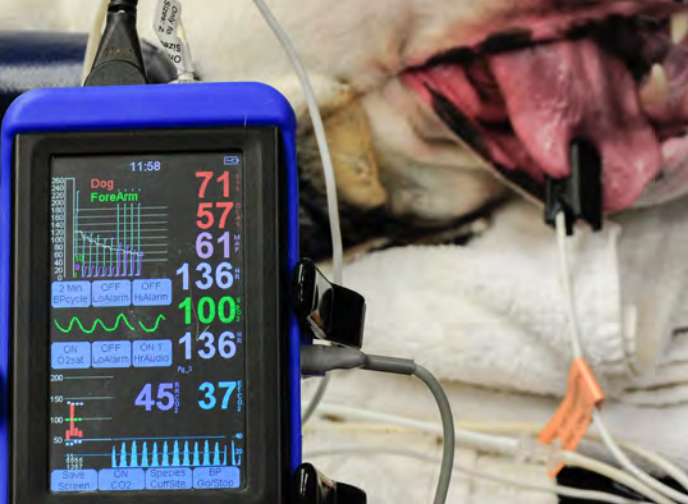end tidal co2 range dog
End-tidal carbon dioxide measurement allows non-invasive measurement of the ability of the. Also called capnometry or capnography this.

How To Use And Maintain Anaesthesia Monitors The Veterinary Nurse
The end-tidal carbon dioxide will not necessarily reflect arterial carbon dioxide levels and the gradient between arterial and end-tidal carbon dioxide cannot.

. The end-tidal carbon dioxide tension PetCO2 measured after a single large tidal-volume breath 15 mlkg body weight was compared to simultaneous measurements of PaCO2 in 6 dogs. Hospital animal arrest and outcome variables were also reported in the Utstein style where. Holes are drilled 50mm in from each end remaining holes spaced with a maximum of 250mm between them.
End-tidal carbon dioxide ETco 2 monitoring provides valuable information about CO 2 production and clearance ventilation. End-tidal carbon dioxide measurement allows non-invasive measurement of the ability of the respiratory system. The end-tidal CO2 value is not pathology-specific or diagnostic.
ETCO2 is a reliable indicator with a high prognostic value in determining the CPR outcome 11 12. The temperature range is between 6 and 6 kPa 35-45 mmHg. This difference is usually not clinically significant though may increase in patients with respiratory.
Studies have shown that in patients who had ETCO2 of 10 mmHg or less. Throughout the breath cycle. Veterinary Specialist Services Veterinary Anesthesia.
The normal amount of carbon dixide in the arterial blood is 35-45 mm Hg a measurable unit of pressure. Normal range is 35-45mmHg and roughly correlates with the partial pressure of CO2 in arterial blood remember that PaCO2 is usually slightly higher than ETCO2 by 2-5mmHg. However an excess of carbon dioxide in the bloodstream can.
The normal values are 5-6 CO2 which is equivalent to 35-45 mmHg. ETCO 2 tends to underestimate PaCO 2 by 2 - 5 mm Hg. End-tidal CO2 monitoring allows for almost immediate information about what is going on with a patient.
Measurements and main results. PetCO 2 was recorded at 1-minute intervals during CPR. The end-tidal carbon dioxide will not necessarily reflect arterial carbon dioxide levels and the gradient.
End-tidal CO 2 monitoring is a non-invasive means of estimating arterial CO 2. Black RAL 9004 Decking Strips. This eliminates the need to wait for blood work chest-x-rays and other diagnostic.
The dogs were anesthetized with nembutal and permitted to breathe spon. Under most circumstances healthy pet no chest surgery end-tidal CO 2 is. Carbon dioxide tension PaCO 2.

Vetgrad 10 Minute Top Up The Website For Vets
![]()
Anesthetic Monitoring Respiratory System Capnograph Dogs Vetlexicon Canis From Vetlexicon Definitive Veterinary Intelligence

Pet Er Care Near Me 33625 Gulf Coast Veterinary Center Of Tampa

Use Of An End Tidal Carbon Dioxide Guided Algorithm During Cardiopulmonary Resuscitation Improves Short Term Survival In Paediatric Swine Sciencedirect

Avma 2017 Anesthesia Monitoring With Capnography

Anesthesia Case Study Brain Disease Veterinary Neurology Of The Chesapeake

Pdf The Relationship Between End Tidal Co2 Mean Arterial Blood Pressure And Neuroendocrine Response In Canine Haemorrhagic Shock Researchgate

Image Gallery Capnography Clinician S Brief

Capnography In Veterinary Anesthesia Owlcation

Learn More With This Respiratory Article By Melissa Marshall

Anesthetic Monitoring Devices To Use And What The Results Mean Today S Veterinary Practice

Exhaled Carbon Monoxide End Tidal Co2 And Peripheral Oxygen Saturation Download Table

How To Use And Maintain Anaesthesia Monitors The Veterinary Nurse

The Abcs Of Veterinary Dentistry V Is For Ventilation Monitoring
Capnography Ii What Happened To The Alfaxan Anaesthetic Injection

Pdf Capnography In Dogs Semantic Scholar

Cms8000 Vet Etco2 Veterinary Patient Monitor Capnograph Vital Signs 7 Parameter 6945040100676 Ebay

The Case Simple Mass Removal Clinician S Brief

Pet Anesthesia In Vista San Marcos Ca Shadowridge Veterinary Hospital